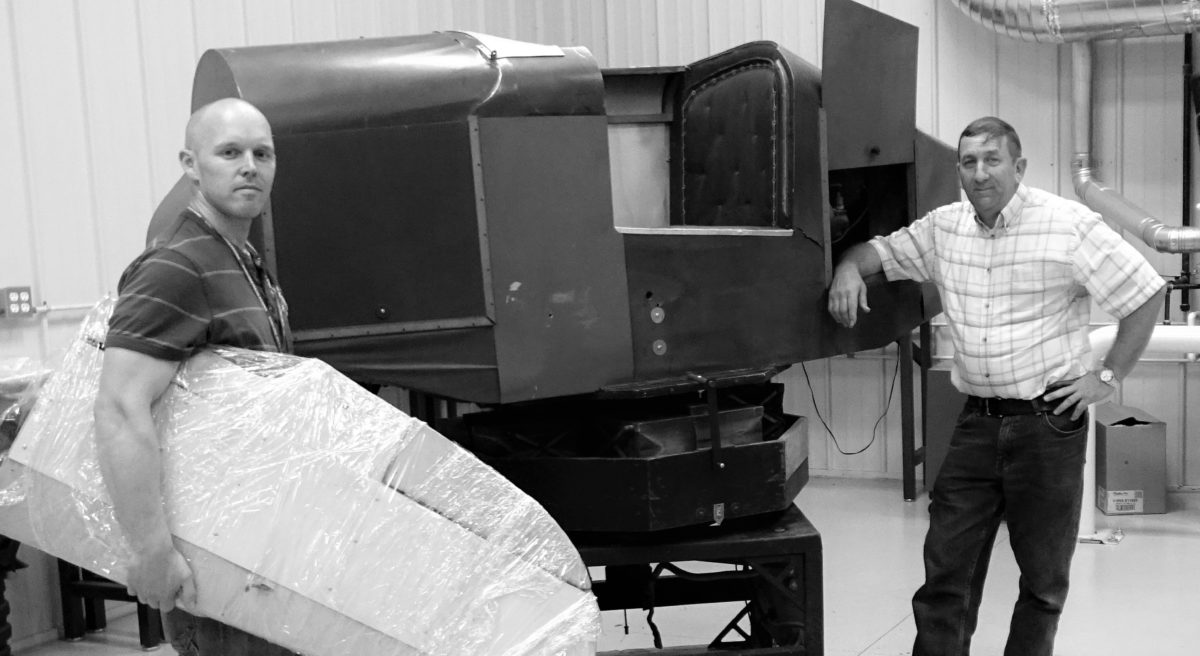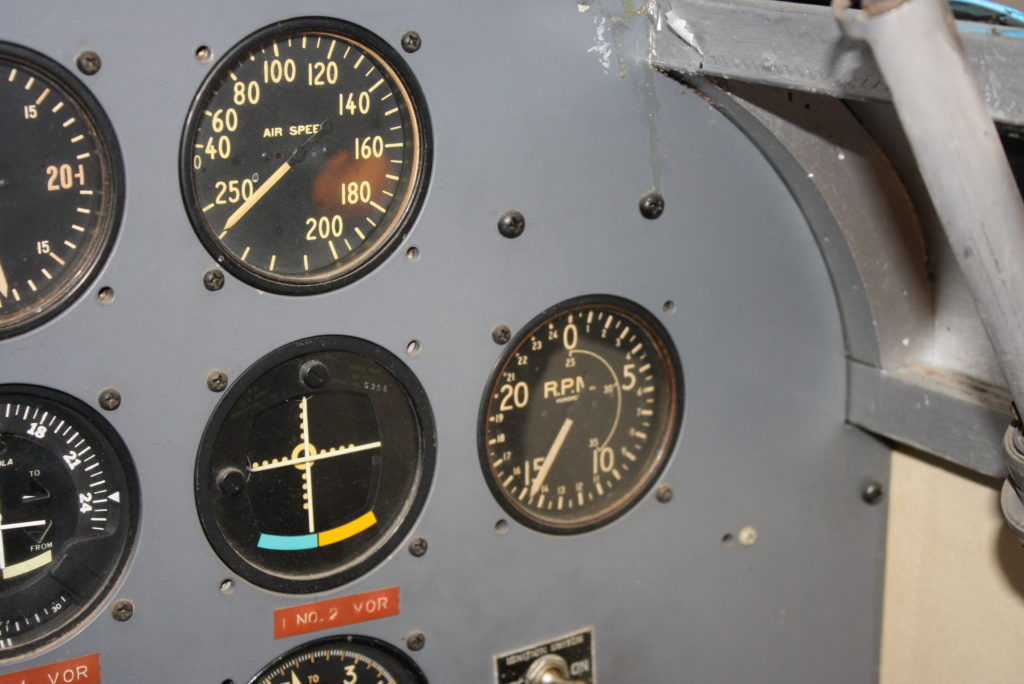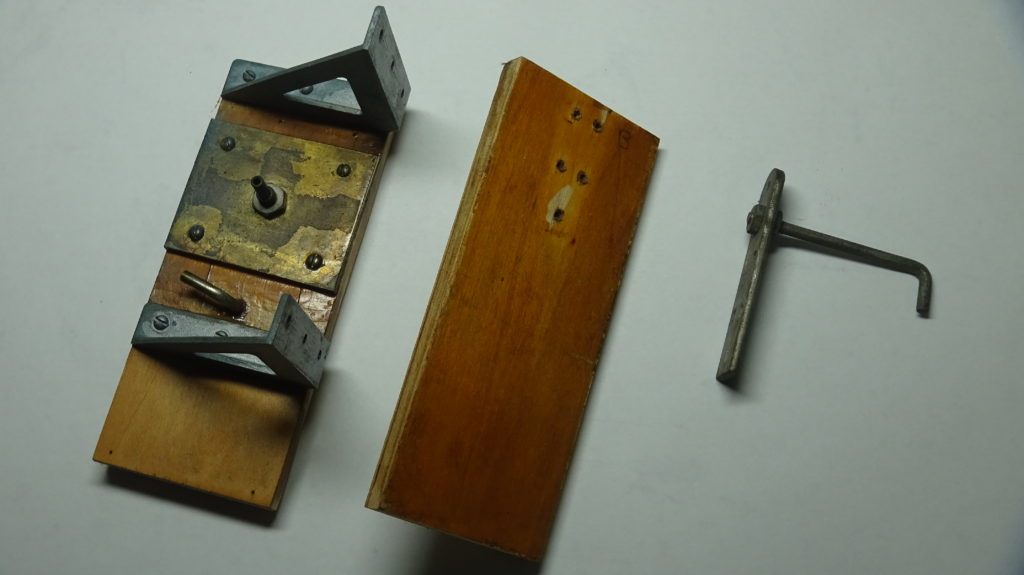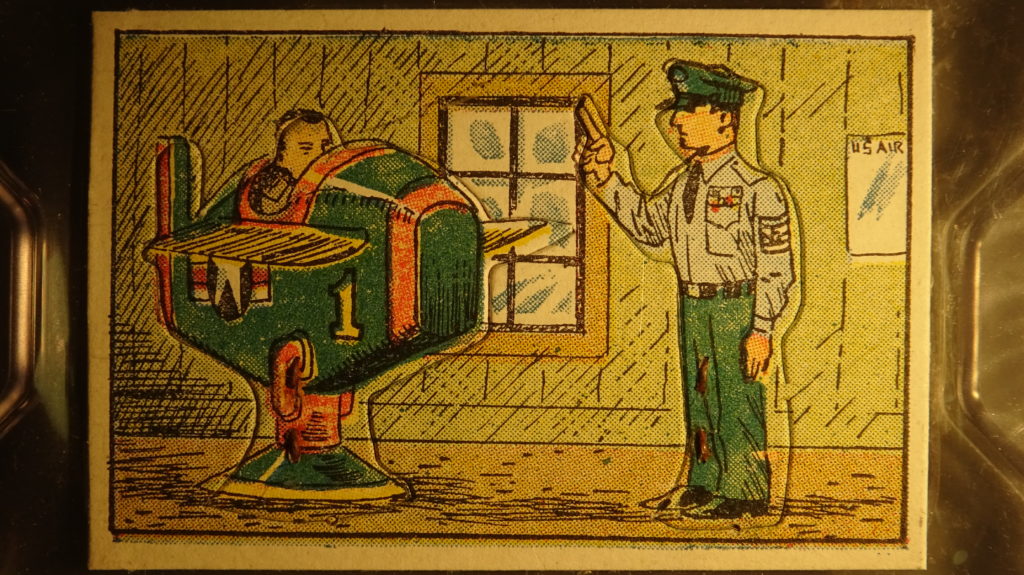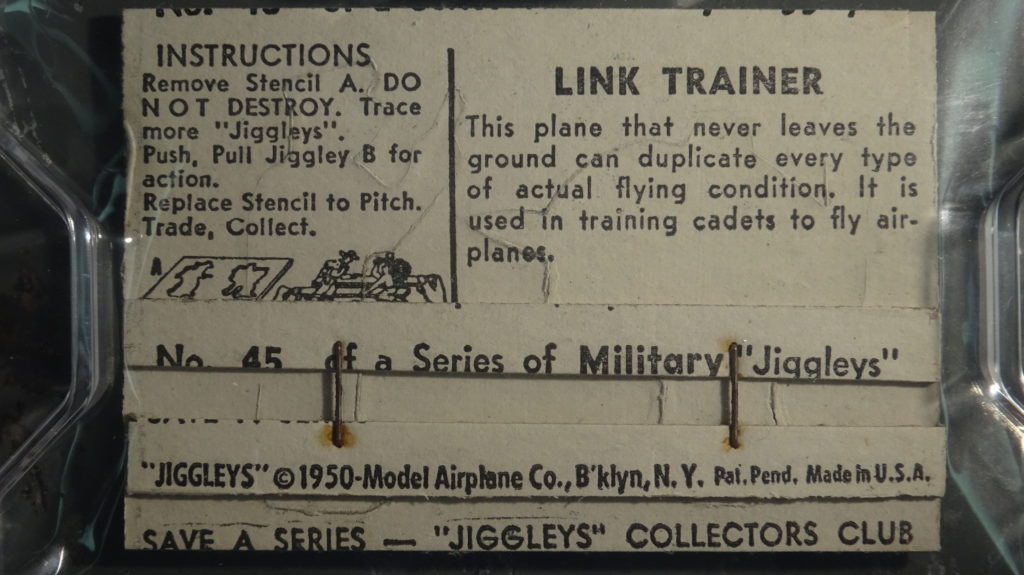When we connected up the ANT-18’s instructor’s air speed indicator, the cockpit air speed indicator stopped working. We traced the problem to the instructor’s instrument having a stuck pointer. The Telegon instruments are all similar. The only difference between a transmitter and an instrument (i.e. receiver) is that the angular position of the Telegon motor is mechanically driven by the transmitter’s internal mechanism, but the instruments’ Telegon motors are free to rotate and align to the transmitter’s sine and cosine fields. Since our instructor’s station pointer is frozen, it is acting like a second Telegon transmitter locked into its current position. The two “transmitters” fight each other and the cockpit instrument stops working.
We pulled the instructor’s air speed instrument; it is up next for repair.
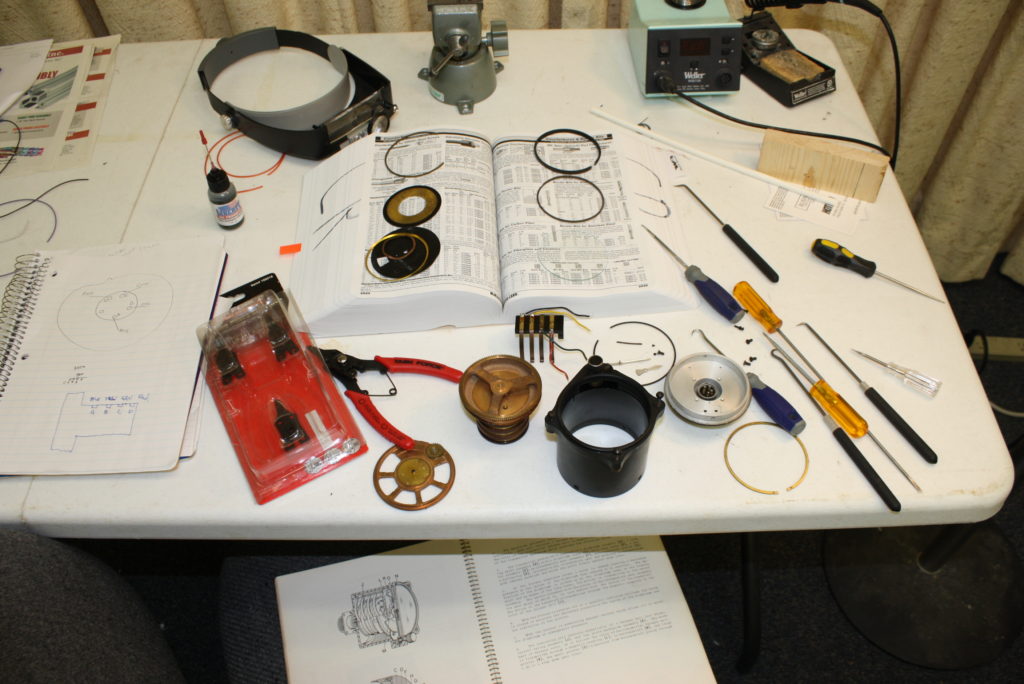
Meanwhile, back to our first altimeter which did not work. We disassembled it down to the Telegon motor. When we first disassembled the unit, it took noticeable force to move the instrument pointer. After turning the pointer by hand a few turns, it freed up the shaft, and now spins easily. We cleaned up the parts, slip rings, contacts, etc., and oiled the pin bearings with clock oil. We tested the Telegon motor with our instrument tester, and the motor now works just fine. We are hoping to reassemble and retest the repaired instrument soon. Fingers crossed!
